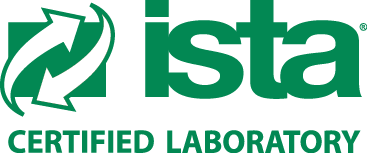ISTA 3A Test Procedure
ISTA 3A is a general simulation performance test procedure that replicates common transport conditions in order to evaluate the effectiveness of individual product packaging. This type of testing can provide manufacturers with key insights into the performance of packaging systems when exposed to transport conditions. The ISTA 3A procedure can be used for packages weighing 150 pounds (70 kilograms) or less.
Purpose of ISTA 3A
The purpose of ISTA procedure 3A test is to evaluate the effectiveness of individual packaging systems and analyze how well they perform when faced with common transit conditions. As a package makes its way from the warehouse to the consumer, it typically faces stresses that can damage the product if the packaging system is inadequate.
Damaged or lost products result in lower profits, poor customer satisfaction, and even safety hazards. Manufacturers should conduct ISTA 3A testing on applicable packages in order to protect their shipments and mitigate risk.
Tests included in the ISTA 3A procedure
In general, the ISTA 3A packaging tests cover four types of packages: small, flat, and elongated, and standard. Each of these individual packages undergoes a series of tests designed to simulate environmental conditions in transit. The following tests are included in the ISTA 3A test procedure:
- Atmospheric preconditioning
- Atmospheric conditioning (ASTM D4332)
- Drop testing (ASTM D5276)
- Random vibration testing with and without load (ASTM D4728)
- Random vibration testing in low-pressure conditions (ASTM D6653 combined with D4728)
Frequently Asked Questions
Get answers to our most frequently asked questions.
What types of packages are tested under ISTA 3A?
There are four types of packages that can be tested using ISTA 3A. This testing standard can accommodate small, flat, elongated, and standard packages. These package varieties are classified under the following criteria:
- Small packages: Weight is less than 10 pounds, volume is less than 800 cubic inches, and the longest side is 14 inches or shorter.
- Flat packages: Shortest side is 8 inches or less, the next longest side is 4 times larger than the shortest side, and volume is 800 cubic inches or more.
- Elongated packages: Longest side of the package is 36 inches or more and the package’s other dimensions are equivalent to 20% or less of the longest side.
- Standard packages: Any package weighing 150 pounds or less that doesn’t meet the criteria outlined for the prior 3 package types.
Do different types of packages require different tests for ISTA 3A certification?
Yes, there are two distinct ISTA 3A test procedures and the one used depends on the type of package being tested. For standard, elongated, and flat packages, the following series of tests will be completed in this order:
- Atmospheric preconditioning
- Atmospheric conditioning (optional)
- Drop testing
- Random vibration testing with and without load
- Random vibration testing under low pressure (optional)
- Drop testing
- Rotational edge drop test
- Full rotational flat drop test
- Concentrated impact
- Bridge impact
- Leak test
Additionally, when testing small packages, the ISTA 3A test procedure is as follows:
- Atmospheric preconditioning
- Atmospheric conditioning (optional)
- Drop testing
- Random vibration testing with and without load
- Random vibration testing under low pressure
- Drop testing
- Leak test
What are the benefits of ISTA 3A procedures?
By conducting testing according to the ISTA 3A standard, manufacturers can gain essential insights into how their product packaging system performs under common transit conditions. The benefits of conducting an ISTA 3A test include:
- Objective analysis of packaging system performance
- Reduction in product damage and loss
- Higher customer satisfaction
- Improved levels of safety
If you’re in need of ISTA 3A testing for your company’s products, contact Westpak. We can conduct accurate ISTA 3A packaging tests that provide you with important data. With the results from the testing, you can effectively protect your product while in transit and know with confidence that the package will protect the product a vast majority of the time.
Accreditations:

Testing at Westpak has been accredited by A2LA to comply with ISO 17025.

Westpak testing labs are ISTA certified to perform a variety of tests.
